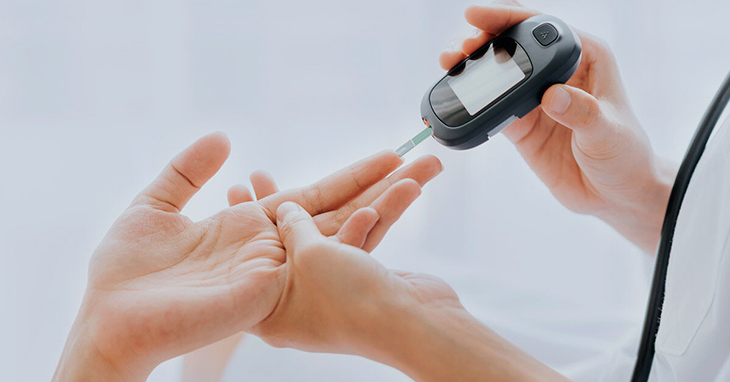
In the human gut are trillions of bacteria and microorganisms that may contain secrets to how the body works. Doctors have been studying this environment to see if health issues can be addressed with the help of these. That’s because millions of diseases are actually connected to the gut microbiome.
As the researchers looked deeper into the biome, they saw that this may help cure autoimmune diseases that include diabetes. “This work is an exciting step in demonstrating that live bacterial therapeutics can be used for treating or possibly even curing chronic conditions,” said the study’s first author Baylee Russell. He is now a graduate student at Harvard University.
“In principle, live bacterial therapeutics may be a relatively non-invasive, low risk and cost-effective option for treating a number of diseases. It is worthy of additional exploration. There’s still a lot of work that needs to be done, but it will be exciting to see this technology expand in the years ahead.”
Recent Experiments
The latest experiments saw microscopic organisms that were transplanted into mice stopped. These were able to halt the progression of diabetes. This could be the very solution that may forever end the need for painful insulin injections for people who suffer from diabetes, and this form of cure will hopefully be available in the near future.
The process requires engineering E.coli bacteria found in stool samples. These may have the capability of treating a wide range of gut issues such as obesity to irritable bowel syndrome. As mentioned previously, found inside the human gut are trillions of bacteria and other microorganisms that can affect an array of chronic human ailments such as obesity, type 2 diabetes, atherosclerosis, and even cancer.
Even for issues that aren’t connected to the microbiome, gut microflora can give a vital point of access that paves the way for the modification of several physiological systems as well as the physical symptoms that go with it.
This is the hope that many scientists have had and this brought the development of live bacterial therapeutics (LBTs). This involves the engineering of bacterial hosts that are able to repair or restore fine and fit microbial function and diversity.
When they looked into this method in the past, the attempts made honed in on engineering common laboratory strains of E. coli. Reality is that this is unable to compete with the native gut bacteria that is found in the living body of a person.
A team that was recently led by Professor Amir Zarrinpar, of the University of California–San Diego, had collected E. coli coming from human and mice gut microbiomes. They then added a protein they called BSH (or bile salt hydrolase). The bacteria became more robust, which meant that this was able to extend their survival in the hostile gut environment long enough to address and treat the health issue.
“Bacteria in our body are adapted to each one of us specifically: the kind of foods we eat, the common stresses our body experiences or induces, and our genetic background,” explained Prof. Zarrinpar. They were able to engineer the bacteria so that they became factories were able to live in the microbiome longer, and this may be able to produce medicines in the long run.
“We know E. coli can pick up pathogenic genes and cause disease, and now we are just realizing if we put a beneficial gene in, it can help us to treat chronic diseases, maybe even cure some of them,” said Zarrinpar. He is also the author of the August 4 paper found in the journal Cell.
He compared BSH to a superhero. He said, “We say to the bacteria: Hey, we will give you a new superpower, which you may not even benefit from, but we will put you right back into the environment that you thrive in.”
When they gave the mice a single treatment of it, the E. coli became present in the entire gut, with the activity happening staying for the whole lifetime of the host. This was able to produce a desirable influence on the diabetes progression in the mice.
This is a significant upgrade compared to similar treatments done with non-native laboratory strains of engineered bacteria. The latter commonly required more than just one treatment. More importantly, the older treatment did not stay in the host’s gut for the same amount of time. In fact, it had a relatively short lifespan. It was also not as consistent as the native E. coli method that was developed by Prof. Zarrinpar and his colleagues.
Aside from being able to bring out a positive influence on diabetes in mice, the group was able to create the same modification to E. coli that was extracted from human gut. Zarrinpar said that the results were “substantial.” However, he does recognize that more work should be made on what they’ve come up with.
Being able to engineering native bacteria comes with some other challenges. These are seen to be extremely resistant to modifications. This is actually a part of their natural defense mechanism. In the proof-of-concept study made, the data showed that inserting a gene into a native bacterium showed around a hundred-fold lower success rate than doing the same thing using lab strains. Right now, the researchers are working on optimizing the process.
“There are many new genetic engineering tools available now that will allow us to engineer these bacteria more effectively,” Zarrinpar explained.
The group sees how they can utilize this type of technology in order to find more ways to addressing the other types of health problems.
“This technology is something that can potentially open up the application of the microbiome therapy to influence so many different chronic and genetic diseases,” Zarrinpar said. “We are dreaming big.”



